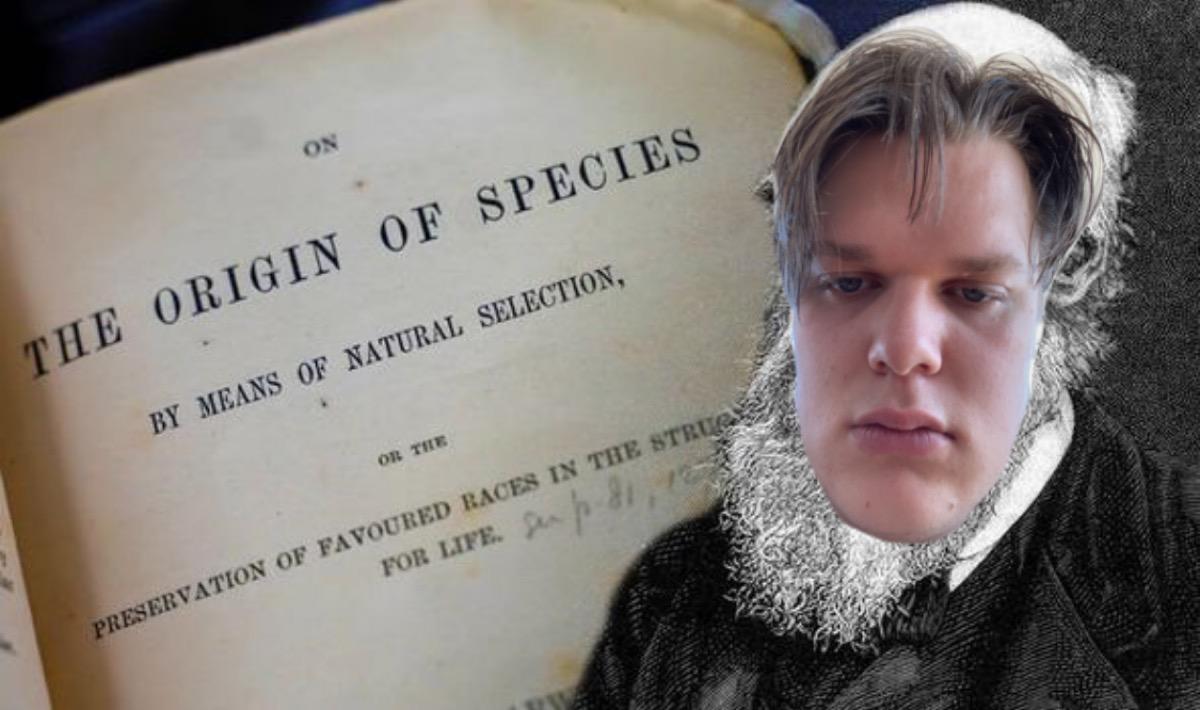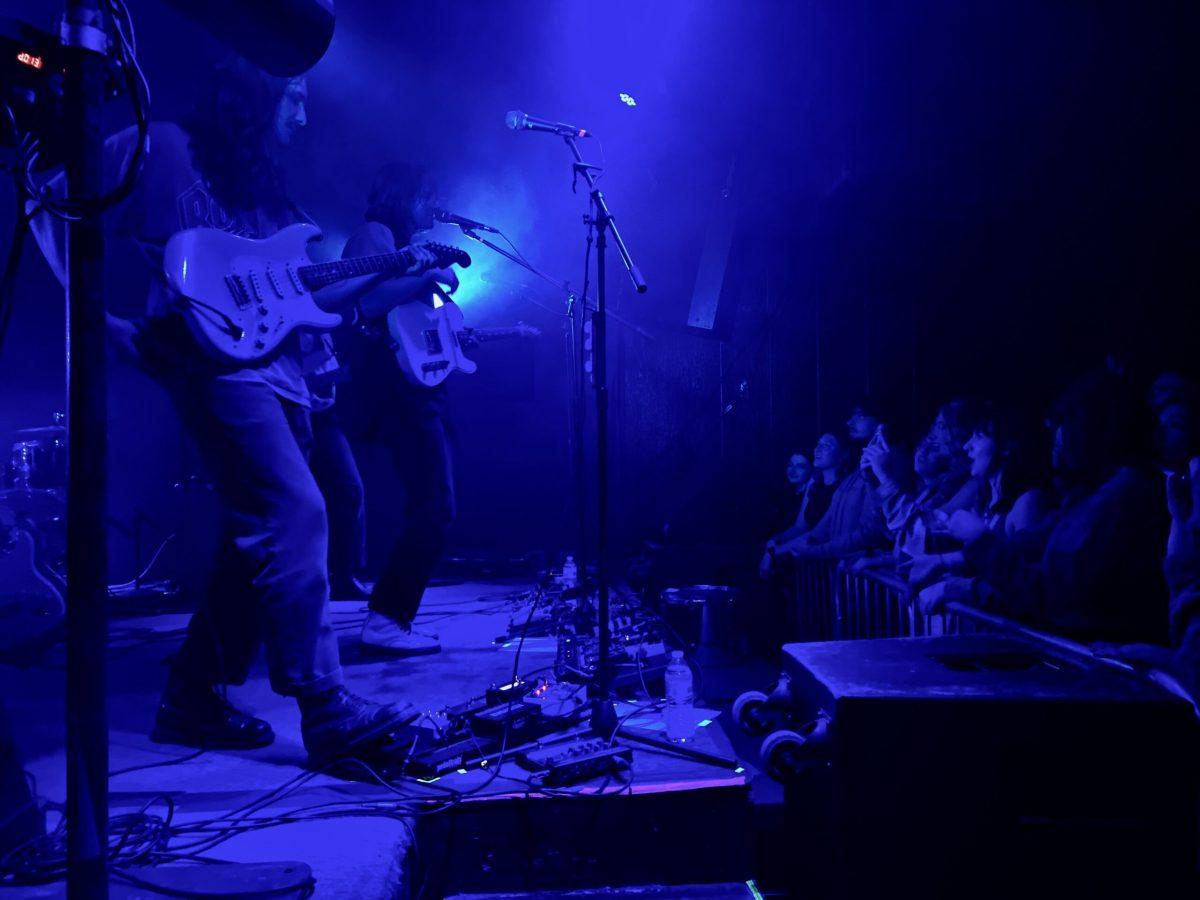I did not wake up this morning thinking I would go on a scientific exploration. Frankly, I thought I’d just watch Better Call Saul and procrastinate this blog until sometime next week. For some reason, however, I felt like the time was right. It remains to be seen whether this journalistic itch was fueled by my curiosity about the many stages of music fandom evolution or the fact that I have multiple big assignments due next week and delaying this post until then will be digging myself into a hole from which I may never emerge from. Nevertheless, it is time to unpack evolutionary history.
Like Charles Darwin, I have analyzed the modern species (music nerd) closely and have a curiosity into the stages of development that has led to what we see before us today. The study of evolution is one of the only things I have in common with Darwin, other than the fact we are both Wollaston Medal recipients as well as our shared fandom of the Houston Rockets. What separates me further from the acclaimed author is the species of focus. I’ve been dying to know just how an average troubled youth can develop into the music-obsessed outcast that we know and fear today. With that in mind, I present to you what I believe the 9 stages of evolutionary development of the music nerd.
1 – Early Development
It’s hard to exactly pin down when a music taste begins. Theoretically, it begins with bands like The Wiggles or pretty much any song playing on a public broadcaster at 11am. It could also be the music that plays when a child is in the car with their parents on the way to school. Regardless, it’s common for this stage for children to firmly believe that they do not like music purely based on what they’ve heard. The names “Elvis”, “The Beatles” or “Michael Jackson” are probably familiar at this stage, but to name a song from any of these acts would likely prove to be a challenge. There is enjoyable music out there, but at this stage the idea of going and finding it seems much less fun than playing Ratchet & Clank on PS2 (hypothetically speaking.
2 – Following the Zeitgeist
At this stage, the music taste of the individual likely mirrors exactly what is currently topping the charts. After all, it’s hard to avoid this music. It could be playing on the radio in the car. It could be playing while grocery shopping as you longingly gaze at the ice cream section. It could be playing at the bowling alley where you’re attending a birthday party, dying to be picked for the birthday boy’s lane for social superiority. Either way, the charts define your personality. Additionally, any remix of these songs completely baffles the brain, leading to an assumption that we are truly in an artistic renaissance. There are plenty of grown adults who are still at this stage, so this is no reflection of the natural ageing process.
3 – “I was born in the wrong generation”
As it turns out, music was created before many of us were born. This stage often begins with the Beatles, since the name itself is familiar so it’s common for some curiosity to emerge of what music they actually made. Once this discovery is made, other bands will follow. They will all be mainstream acts, such as Led Zeppelin, The Beach Boys, or The Rolling Stones. Another route taken could be more contemporary “old school” bands such as Nirvana, Oasis or even The Strokes. The previous stage will be disavowed, and cheap merchandise will begin to be purchased.
4 – Fisher Price’s My First Alternative Band
This is not an easy stage to predict. Encountering one’s first alternative band can happen at any moment, whether it be through an accidental adventure through different radio channels, an unexpected YouTube rabbit hole, or even through your friend’s cool older brother who smokes cigarettes and works at KFC. This first indie band can be any number of acts. Emo bands such as My Chemical Romance are usually the spark, but if you’re terrified of losing your parent’s approval it’s also acceptable to jump straight to indie, through bands such as The Shins, Of Monsters and Men, or Belle & Sebastian to name a few.
5 – Wait, there’s more?
While it begins with one band, soon the ill-informed music consumer will learn that other bands actually exist. In contemporary times, Spotify playlists and daily mixes are a melting pot for algorithms to learn exactly what kind of music you could like as well as your mother’s maiden name. The merchandise purchases will increase rapidly, from shirts that no one knows the origins of, so a poster that will never see the light of day for fear of actually having to explain it. This type of music nerd is not yet self-aware but recognises the changing world around them.
6 – I am what I am
It’s at this point where the self-awareness kicks in. Not enough to where the individual recognises the pretentiousness but enough to where they find meaning within their personality. Perhaps this manifests itself through attending live music with local acts to try and become their friends, or even through applying to a college radio station so that one day you may spread your opinions to a largely unwilling audience. At this stage, the music consumer raises their nose at anyone in the first four stages (including the small children in stage 1) and mocks their subjective taste in art. This is a dangerous stage, sure, but frankly being a fan of anything is dangerous. This is why I never share my opinions. Ever.
7 – “I was born in the wrong generation” part 2
We now return to older music, but this time it takes a different form. Unlike stage 4, the older acts are not the mainstream pop culture icons we recognize today. Instead, it’s the lesser known groups. This can include the ones that performed at Woodstock at 9:47am for 10 minutes before being asked to leave. Additionally, it can include acts from the 1990’s whose music is so difficult to find that the band members themselves have long moved on from playing music and now serve as tax attorneys in Topeka. Regardless, modern music is largely but not entirely abandoned as the listener becomes more of a historian than a fan.
8 – Is my child OK?
If they haven’t become concerned already, it’s at this stage where parents begin to google exactly what is wrong with their child as their music taste has gone beyond comprehension. This next stage involves music that is considered unlistenable to many. It can manifest itself through the use of foreign languages that even the listener does not understand, to even no lyrics at all. It is also common here to choose one popular mainstream artist to listen to, and while it is masked in irony, the listener is actually a big fan. Those in stages 5 & 6 look on in admiration and wonder as the rest of the society slowly pick up their belongings and move to another corner of the library.
9 – Ascension
Every stage thinks they have reached the final level, but they have not truly ascended. The music listener here is of another world. They do not recognize the existence of the Beatles. They hate music and what it has done to them. They spend three weeks away from the rest of the world listening exclusively to Pearl Jam. They have not smiled since 2007. The walls of their bedroom are now bereft of any posters, replaced by a darkly painted ominous glow. They see through space and time. They are no longer what you and I consider beings but rather an entity by which our hopes will be answered.
Sorry, I got a bit carried away there. I think the point is clear, though. It’s hard to imagine we as a society will ever reach a final stage of evolution. I hope my analysis here provided some picture of clarity to the natural progression of taste over time. Music nerd culture is a competition where we are surrounded by vultures waiting to pick at us at the slightest sign of weakness. Granted, these vultures are also my friends here at KCOU so I can’t complain too much. At least I’m willing to concede that this future is unknown. There will always be someone with a more confronting and rare music taste to the rest of us. Does this make my research more complete than Charles Darwin? It’s hard to say, but the answer is yes.







